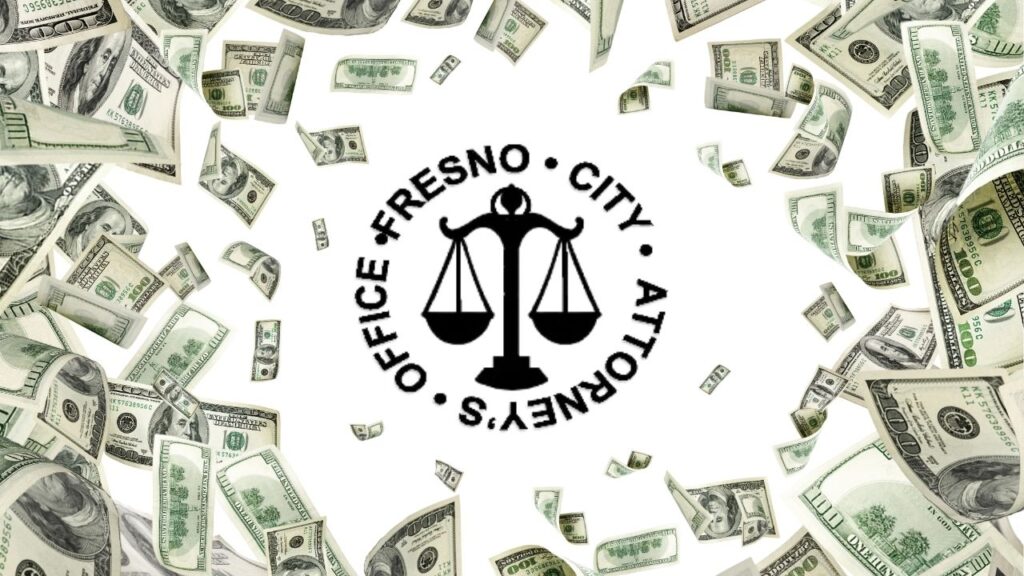Teenage unemployment has nearly doubled in two years in California, something one economist says is due to high minimum wages. (GV Wire Composite/David Rodriguez)

- An economist says California has crossed a threshold where the high minimum wage has had an outsized impact on employment figures.
- Data shows teenagers are the most impacted as unemployment for those under 20 years old has doubled in less than two years.
- Many studies show the benefits of youth employment, from better wages later in life and less involvement in crime.
Share
|
Getting your Trinity Audio player ready...
|
California’s minimum wage has crossed an important threshold, according to one economist who says the impact can be seen in the near doubling of youth unemployment.
Even with the 208,000 jobs added since May 2023, the state’s unemployment rate rose .7%, putting it at the highest in the nation, according to Employment Development Department data.
Nationally, unemployment only rose .3% in the same time period.
For Chris Thornberg, founding partner for Beacon Economics, that divergence begged a deeper look.
“There’s a little mystery in California. And the mystery is why is our unemployment rate going up? We keep adding jobs,” Thornberg said.
Thornberg looked at the federal government’s data of who was employed and who wasn’t.
“What we found is 90% of the people who are now unemployed are kids. That is to say, they’re 24 and under, mainly 16 to 19,” Thornberg said. “So, it’s teenagers for the most part who are taking the brunt of this decline in employment.”
Teenage unemployment can have long term effects as multiple studies show young people with jobs commit fewer crimes, have better mental health, and perform better financially later in life.
The negative effects of California’s minimum wage — especially when it comes to restaurants — can be seen beyond teenage unemployment. Coming into the summer season, restaurants added the fewest jobs in more a decade, excluding 2020 when restaurants were shut down because of the pandemic.
Already, another voter initiative proposes raising California’s minimum wage again, this time to $18 on an hourly basis. Thornberg said California needs to reevaluate the push to continually drive up minimum wage.
“There is just this hard charge, more, more, more, more, more, more, as if somehow this thing can be pushed ad nauseum. And you can’t,” Thornberg said. “It’s just time to slow down, understand their consequences and ask the hard questions about how we do this right.”

Seasonal Restaurant Hiring the Worst in More than a Decade (Excluding the Pandemic)
When the U.S. Bureau of Labor Statistics released its hiring numbers for May, Gov. Gavin Newsom took it as a win. In April and May — the first two months of the higher minimum wage — limited-service restaurants added 10,600 jobs.
The increase in jobs opposed claims the industry would shrink as a result of the minimum wage increasing 25% overnight.
“Because of the leadership of California’s legislature, these hard workers finally got the raise and job security they deserved,” Newsom said in a news release on June 26.
Restaurant work is seasonal, with hiring largely coming in the summer months. But the .4% year-over-year growth for limited-service restaurants was the lowest it’s been since 2014, not including 2020. The Bureau of Labor Statistics doesn’t report before 2014.
Related Story: How Has Fast Food’s $20 Minimum Wage Affected Employment? Data Shows ...
From 2014 to 2019, year-over-year growth coming into May averaged 3.9%. After the pandemic, growth averaged 9.7% — distorted by pandemic recovery.
This year’s job growth from January to May was also lowest of the past decade, again, excluding the pandemic, climbing only 2.9% compared to a pre-pandemic average of 4.75%.
“Limited-service restaurant employment grew a little less than 1% over the course of the last year, which is one of the weakest year-over-year growth ever seen in the industry,” Thornberg said.
Youth Employment Critical to Development
Ali Nekumanesh, executive vice president with Deli Delicious and founder of Colorado Grill, said that after price hikes he’s noticed the dining rooms of his restaurants diminished when they should be busy.
They’ve had to cut back on hours and hiring — especially for young people.
Related Story: Local Operators Say California’s $20 Fast Food Minimum Wage Could Bring ...
Having a job as a teenager translates with good reliability into higher wages by age 23 and better job quality as a whole by adulthood, according to a study from Brookings Institute.
The U.S. Department of Labor cites studies showing employment keeps young people from turning to crime and helps maintain mental health.
Nekumanesh said Deli Delicious often hires teenagers. Workers learn skills essential to all future jobs.
Young people learn to come to work on time and follow simple directions. Many young people need to be taught they have to wash their hands after using the bathroom or that they can’t use their phones on the job.
“It’s a learning thing, and the behaviors that they learn and the work ethics that they learn prepares them for more and better things in life,” Nekumanesh said.
That learning curve has become more expensive.
Since the $20 minimum wage implementation, scheduled hours have been cut, especially for high school-age kids.
Nekumanesh has already seen the impact that higher prices has had on customer counts. With dining areas emptier than in past years, his staffing needs decrease and it becomes harder for him to justify hiring young people.
“I don’t have to spend 40 hours training the 16-year-old where I can spend 10 hours training this adult person to make the sandwiches and to say hello to the customer and to thank them as they’re leaving,” Nekumanesh said.

U.S. Average Wages Grew Without Raising Minimum Wage
Minimum wages going from $7 to $11 hourly has little impact on labor markets, Thornberg said. But there is an unknown threshold where continually increasing minimum wages starts to impact labor markets. Thornberg said California has crossed that mark.
Thornberg’s team analyzed unemployment rates nationally by putting states into three groups, determined by minimum wage ranges. What they found was that as minimum wage rates went up, so did unemployment.
The 15 states with minimum wage ranges from $14 to $17 had the highest unemployment rates, averaging 4.06%. The 20 states using the federal minimum wage had the lowest unemployment at 3.21%. The middle 16 states averaged a 3.47% unemployment rate.
Related Story: Is California’s $20 Minimum Wage to Blame for Loss of 10,000 Fast-Food ...
But average hourly pay was not dependent on minimum wage. Total hourly pay — including salaried, managerial positions — increased nationally nearly parallel with California’s rate of increase.
Proponents of higher minimum wages say increases make a living wage possible. Thornberg said that living wage comes at the cost of youth employment. His solution was to get workers away from minimum wage jobs into careers.
“The damage being done to our economy, to our labor markets, to our most vulnerable economies and workers is too high of a cost to justify what you’re doing,” Thornberg said. “There are better ways of helping that person that seems to be the target of this high minimum wage.”



















